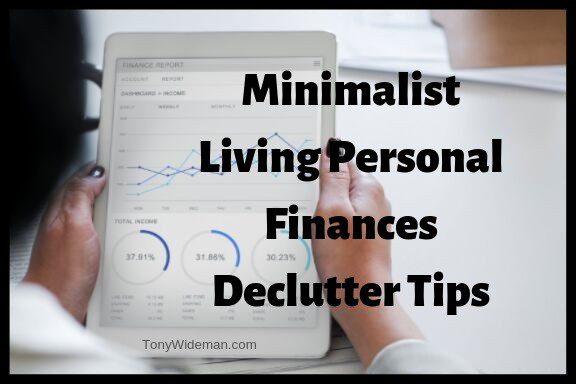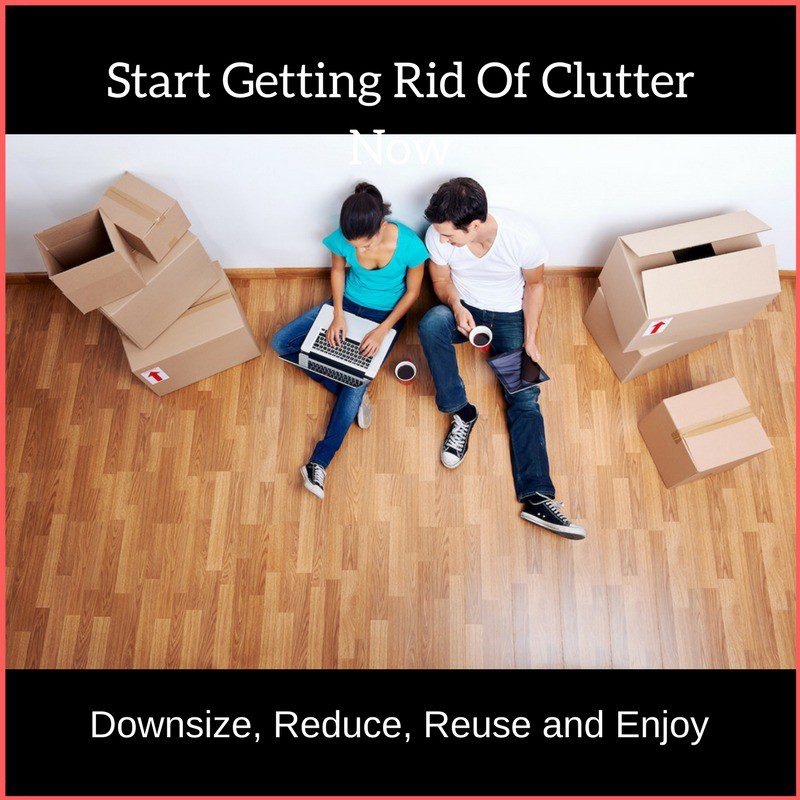Minimalist Solutions To Online Shopping Addiction and Overspending
You don’t have an online shopping addiction to benefit from shopping less. Most of the stuff purchased online will become unused clutter stored somewhere in your home.
Americans are amassing a lot of stuff, like shopping online, which has become as easy as clicking and buying. If you don’t watch out, online shopping addiction could become a habit that wrecks your finances and quality of life.
Can you benefit from tips to lessen your online shopping?
Americans and others are amassing a lot of stuff
Americans are amassing a lot of stuff. Before the internet, shoppers had to leave the house and go to multiple stores with limited selections to make a purchase.
Now, we can shop from anywhere at any time, and the selection of product providers and products is overwhelming compared to ever before.
Shoppers have the world at their fingertips, as they can purchase almost anything instantly from a laptop, phone, or tablet.
Americans are amassing a lot of stuff. The internet makes consumerism as easy as a few clicks. With growing online shopping addiction on the rise, shoppers don’t even browse or shop anymore. They go to their favorite websites and click to buy.
Shoppers can shop from anywhere, and products can arrive at their doorstep as soon as the next day. This ease and convenience feed the growth of online shopping addiction.
As a Minimalist, this trend alarms me. Americans are amassing so much cheap, useless junk our living spaces are bursting at the seams.
For example, we spend more on shoes, jewelry, and watches ($100 billion) than on higher education ($99 billion).
There are 300,000 items in the average American home.
The U.S. has 3.1% of the world’s children but consumes 40% of the world’s toys.
The average size of the American home has nearly tripled over the past 50 years.
The number of people per TV home holds steady at 2.5, carrying on the trend of more TVs per home than people.
Online shopping can be pleasurable to many people for a variety of reasons. Some people love the thrill of finding deals in the guise of saving money.
Others shop and a way to bolster their self-image or to impress others. Research shows shopping can cause the release of dopamine that is a neurotransmitter that helps control the brain’s reward and pleasure centers.
The problem starts when online shopping becomes out of control. The number one sign of developing online shopping addiction is when friends and family begin to point it out to you or when you begin to hide your purchases from them.
Does any of this sound familiar?
What Ever Happened To Quality?
I was recently at an Old Navy store with a 40% off sale. This woman caught my attention as she frantically ran from the cash register to a shoe rack.
I could hear something about the 40% off and another 10% off if she does this and another 10% off if she does that. Then, I noticed this trend as shoppers added more stuff to their purchases as they got more information from the staff.
I wondered if they needed the extra stuff, and like I always do, I asked where they would put it. I mean, if this happens regularly, the staff must accumulate and have to live somewhere. LOL.
I decided to check out the shoes and some of the products these shoppers were so happy to purchase. To my surprise, they were, in most cases, poorly made junk.
The shoes were anyway. When I picked them up, they felt as light as a piece of tissue. They looked like they would last less than a month of everyday use.
Maybe storing this stuff will not be a problem, as its lifespan will be very short, and it could become a landfill problem.
Because of the rapid globalization of manufacturing, products are cheaper than ever. Products are so affordable that shoppers add them to their offline and online shopping carts without a second thought.
The products are so cheap that when baited with the thought of saving money, the offline and online shopping addiction kicks in. The shopper says why not?
But are they saving money? Do they need more cheaply made products? Or believe they are saving money? Do they think the mega-retailer is helping them out?
As you may have guessed or even noticed, Americans are not curtailing their shopping habits.
The rising demand for cheaper clothing, electronics, and other goods entices manufacturers to spend less to make them with almost no downside.
We all know the effects of that, which means they often fall apart more quickly. I experienced poor quality products when I experimented with simplifying my life with a Minimalist Uniform Wardrobe.
I learned the hard way that purchasing higher-quality products saves money in the long term.
While these practices may temporarily scratch the shopper’s online shopping addiction itch, cheap, poor-quality products cost everyone more money in the long run and fill our homes with more useless stuff.
Don’t Become An Online Shopping Sucker
Online retailers make it too easy to buy products you don’t need. Pop-ups and ads about a product you recently Googled follow you around the internet for days. LOL.
I was badgering you to “BUY ME NOW!”.
Amazon’s patented one-click buying process can be deadly and I am sure fuels many online shopping addictions. With just one click, your credit card is billed, and products arrive at your doorstep as soon as the next day.
There is something sinister about that as small children mistakenly order products that arrive at their home to their parent’s surprise. LOL.
Amazon launched its Prime program in 2005, and now more than 100 million people have signed on to pay $119 a year for “free” two-day shipping. As a result, free shipping is quickly becoming the norm for online shopping.
Returning these products is not as easy. It requires the online shopper to get up and do something. LOL. Because of low cost, low quality, buying one, getting the other half off, and deep discounts, shoppers feel no pain keeping products they usually return.
Pet shops have used this hustle for ages. “Take the puppy home for a few days to see if you like it.” LOL.
That said, at least 30% of all products ordered online are returned, compared to 8.89% in brick-and-mortar stores. I believe that speaks to the ease of buying junk sight unseen online.
Still, 70% of online shoppers keep the products they have purchased.
As they say, “The house always wins“.
More Online Shopping Suckers Everyday
Americans spent over $130.6 trillion in 2017, nearly 3 percent more than the total amount paid in 2016. Holiday spending has also increased—the average adult spent almost $800 during Christmas, including Black Friday shopping.
Americans spent, on average, $971.87 on clothes last year, buying nearly 66 garments,” which was “20 percent more money than they spent in 2000.” We also spent $240 billion on electronics and accessories — twice as much as we spent in 2002 — and a large nation’s GDP more on “self-care products – The Atlantic.
Is this a sign of rising online shopping addiction or brick-and-mortar shopping dying? These amazingly creepy pictures of abandoned Shopping Malls in the United States are telling.
Let me know what you think in the comments below.
The Hard Facts About Online Shopping Addiction
Online shopping addiction is what many call a first-world problem. If you earn a low income and don’t have access to technology, online shopping addiction will rarely be a problem.
I say almost because poor people shop also, and they can also suffer from online shopping addiction.
There is good news. Not everyone has fallen prey to online shopping addiction. Some people, like me, embrace the Minimalist Lifestyle, while others embrace the Zero-Waste movement or are just brilliant.
As a result, online consignment shops like thredUP and Poshmark help people buy and sell clothes from their closets, which they no longer use.
Second-hand stores like Goodwill and The Salvation Army have an online presence that helps people recycle the junk they no longer want.
The growing ease of recycling stuff you no longer want has two effects. Some people see the vacuum of vacated stuff as a cue to buy more.
Others see the vacuum of vacated stuff as a relief and vow to enjoy it. Americans are quickly becoming a country of hoarders, and online shopping addiction is fueling that growth.
According to the EPA, just 9 percent of plastic and only 15 percent of textiles are recycled in The United States. How does clothing get recycled?
Many clothing in the waste stream gets sent to the developing world, used for rags, or sent to a landfill. Even this absurd solution for sustainability cannot keep pace with the steady purchasing flow.
American homes will become more extensive and filled with junk, and more off-site storage units will be built.
Simple Ways To Avoid Feeding Your Online Shopping Addiction
Online shopping addiction, hoarding, and clutter sap energy for our being and prevent people from living the quality of life they want.
Many sufferers seek ways to remove the guilt and emptiness associated with an online shopping addiction and overspending.
Do you suffer from online shopping addiction? If you have reoccurring evidence of crossing the line, take ownership. Acknowledging it is one of the most critical steps toward a solution.
Sufferers should examine their reasons for shopping online. If they like the ease and speed of purchases, they should consider buying most of what they need locally.
They should try using cash to make purchases. Using credit cards or other electronic methods is less painful than using cash, and the finality of counting out cash and handing it over can ground shoppers in the reality of their purchase.
Before shopping locally, please make a list of the items to be purchased and STICK TO IT!
Some products will not be found locally, or purchasing online makes better sense. Before shopping online, try these tips for Minimalist Living. Before I make a big purchase, I follow these simple steps:
- I ask myself if I need the item.
- I wait at least a week before buying to see if I want to buy the item.
- Then, I will ask if there is another item I already own that will satisfy my needs.
- I asked myself if I could borrow the item.
- I asked if buying the item used would fulfill my needs.
If you realize your online shopping addiction and overspending is a more significant problem than you can handle, please seek professional help.








The influence of Online shopping addiction is becoming so predominant that we seriously need to start to worry. The ease of access to get whatever you want to be delivered to your doorstep is a factor making this addiction problem prevail. This problem is beginning to affect those that sell offline because a lot of people prefer buying online.
Google and similar sites don’t even help matters because as soon as you search about a product before you know it, wherever you go to that particular product would pop up.
Of recent, I search a particular product in google and then later that day I opened my Instagram account and before I knew it I saw that particular product I searched on my field as an ad and this made me make the purchase. This was an addiction that I succumb to all thanks to google.
It is a real problem and we need to have a lot of restraint to be able to withstand it.
Thanks for your comment Jay. That one click Amazon buy button was a game changer. LOL. Everyone has adopted that strategy.
When my home began busting at the seams with stuff flowing out of every room I began to adopt this strategy I mentioned in the post:
Before shopping online try these Minimalist Living tips. Before I make a big purchase I follow these simple steps:
I ask myself if I really need the item.
I wait at least a week before buying to see if I really would like to buy the item.
I ask myself if there is another item I already own that will satisfy my need.
I ask myself if I could borrow the item.
I ask if buying the item used would satisfy my need.
Give it a try. I was a great place to start for me 😉
Wow, this is quite a eye opening post.
I had no idea we spend more on shoes, jewelry, and watches than on education. That’s just not right. The ratio of children to toys is a bit excessive too. I have to admit there are 3 TVs in my household and only 2 people so I guess I’m slightly better than the average but still, I can see where this might be too much.
Believe it or not, I’m not much of a shopper. I do buy whatever I want when I want it but they are usually high-end items like a laptop that I’ll keep for 5-7 years before I replace it.
My mother is addicted to shopping but her addiction is in-person at brick and mortar stores. Do you have any posts or recommendations on how to address her addiction? I fear it will one day leave her without the means to support herself. I’m just not sure how to approach it where she won’t take offense.
Thank you for this post,
Scott
Thanks for your comment Merlynmac. Yeah, I am guilty of some my self. I am working on living with more intention and attention.
Science has found there may be reason why we do some of the things we do. You or your mother may find value in this post “Why We Buy Things We Do Not Need And What To Do About It“.
The influence of Online shopping addiction is becoming so predominant that we seriously need to start to worry. The ease of access to get whatever you want to be delivered to your doorstep is a factor making this addiction problem prevail. This problem is beginning to affect those that sell offline because a lot of people prefer buying online.
Google and similar sites don’t even help matters because as soon as you search about a product before you know it, wherever you go to that particular product would pop up.
Of recent, I search a particular product in google and then later that day I opened my Instagram account and before I knew it I saw that particular product I searched on my field as an ad and this made me make the purchase. This was an addiction that I succumb to all thanks to google.
It is a real problem and we need to have a lot of restraint to be able to withstand it.
Wow, this is quite a eye opening post.
I had no idea we spend more on shoes, jewelry, and watches than on education. That’s just not right. The ratio of children to toys is a bit excessive too. I have to admit there are 3 TVs in my household and only 2 people so I guess I’m slightly better than the average but still, I can see where this might be too much.
Believe it or not, I’m not much of a shopper. I do buy whatever I want when I want it but they are usually high-end items like a laptop that I’ll keep for 5-7 years before I replace it.
My mother is addicted to shopping but her addiction is in-person at brick and mortar stores. Do you have any posts or recommendations on how to address her addiction? I fear it will one day leave her without the means to support herself. I’m just not sure how to approach it where she won’t take offense.
Thank you for this post,
Scott